With a high volume of unseasoned travelers passing through its terminals every day, Harry Reid International Airport (LAS) in Las Vegas provides an ideal working laboratory for new screening equipment. Currently, TSA is putting several technologies and procedures through the paces at its Innovation Checkpoint on the lower level of Terminal 3.
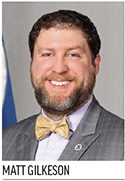 With a high volume of unseasoned travelers passing through its terminals every day, Harry Reid International Airport (LAS) in Las Vegas provides an ideal working laboratory for new screening equipment. Currently, TSA is putting several technologies and procedures through the paces at its Innovation Checkpoint on the lower level of Terminal 3.
With a high volume of unseasoned travelers passing through its terminals every day, Harry Reid International Airport (LAS) in Las Vegas provides an ideal working laboratory for new screening equipment. Currently, TSA is putting several technologies and procedures through the paces at its Innovation Checkpoint on the lower level of Terminal 3.
Four lanes allow TSA personnel to assess every phase of the process as officers screen passengers and carry-on items. Their key objectives? Improving the experience for travelers, enhancing safety/security and refining operational efficiencies.
While TSA regularly test-drives new technologies and procedures at 13 different airports, LAS is the only location where everything comes together to create what it calls the “Innovation Checkpoint.” Matt Gilkeson, director of TSA’s Innovation Task Force, explains that the checkpoint’s separate, almost isolated, location within LAS allows the agency to deploy new equipment without interrupting routine airport operations.
|
Project: TSA Innovation Checkpoint Location: Harry Reid Int’l Airport in Las Vegas Terminal: 3 Airport Owner: Clark County Project Manager: TSA Office of Innovation Task Force Checkpoint Opened: Sept. 2019 Hours of Operation: 5 a.m.-1:30 p.m. daily, except Wednesdays Lanes: 4 Technology: Millimeter wave scanners for passenger screening; computed tomography & 3D imaging for screening passenger belongings; automatic bin intake system; UV bin sanitizing; RFID bin tracking; digital message boards for checkpoint entrances |
Despite the frequently quoted slogan, “What happens in Vegas, stays in Vegas,” TSA is hoping for just the opposite. The idea is to rehearse with new equipment and processes at LAS, and then roll out the top performers at other airports.
Rosemary Vassiliadis, aviation director for Clark County, explains it like this: “If it works in Vegas, it will work anywhere.”
Deploying New Technology
While LAS serves as the proving ground for new screening systems, TSA actively encourages other airport operators to deploy the latest technology possible. Gilkeson urges airports planning for future improvement projects to have their design teams work with TSA to find ways to move passengers through checkpoints more quickly, while also maintaining security.
“An airport can advocate for the procurement of the next generation of equipment by working with their local TSA personnel,” he says. Or, an airport can purchase already approved equipment, which is then donated to the TSA for its use at a checkpoint.
Gilkeson adds that the Innovation Task Force has streamlined the process to assess and demonstrate new technologies and then make recommendations that shape future equipment purchases. Under the old system, it would take more than five years from conception to deployment.
“Transition from innovation to deployment can occur much more rapidly depending on the size of the solution. Larger sized solutions can take a bit longer, but now typically move out in less than five years,” Gilkeson explains.
For instance, TSA tested its credential authentication technology at LAS during the summer of 2018, and now it is deployed at checkpoints across the nation. The system at LAS has also been upgraded to include a more advanced biometric verification of traveler identity and travel plans, Vassiliadis adds. The self-service equipment no longer requires TSA officers to verify boarding passes.
Officials at LAS were so impressed with how the automated screening lanes performed at the Innovation Checkpoint, they allocated roughly $4 million to install the system at all four of its standard checkpoints. “It is so beneficial in controlling our peaks that it was worth the investment,” says Vassiliadis.
The new automated screening lane, which leverages computed tomography and a 3D bag imaging system, has also been deployed at several other airports nationwide, including Hartsfield-Jackson Atlanta International, Denver International and George Bush Intercontinental. The new equipment enables security officers to simultaneously review multiple 3D images and manipulate views to get a closer look at questionable items. It also eliminates the need for passengers to remove laptops and other electronics from their carry-on bags for screening.
Assessments Underway
Amid positive buzz about this new passenger convenience, TSA continues to try out new devices for screening carry-on bags and other items travelers bring to checkpoints.
An integrated screening system that includes automated intake for bins is currently being evaluated at LAS. Passengers do not have to push or feed their bins through the scanner. Once they load their items into bins, travelers can proceed directly to the body scanners.
At one test lane, the bins are equipped with an RFID tracking system, which facilitates the diversion of questionable bins for manual examination. In another lane, the bins automatically pass through ultraviolet lights that kill germs. Interestingly, the UV disinfecting system was designed before the ongoing COVID outbreak.
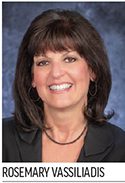 “I have to give the TSA a lot of credit for their vision and forward-thinking for devices like the bin sanitizer,” Vassiliadis notes.
“I have to give the TSA a lot of credit for their vision and forward-thinking for devices like the bin sanitizer,” Vassiliadis notes.
Two of the four lanes are equipped with flat panel millimeter wave technology for passenger screening. The new advanced imaging technology permits travelers to stand in a more relaxed, natural posture with arms down rather than having to raise their arms as the millimeter wave scanner circles them. The open design of the new equipment allows travelers in wheelchairs to be screened at any gate rather than a specially designed ADA-compliant gate.
Once flat panel scanners have been qualified, virtually any airport or airline will be able to purchase and donate them. According to Gilkeson, TSA does not have any immediate plans to purchase these devices for deployment.
New digital message boards for checkpoint entrances are also being tested at LAS. The boards provide real-time status reports and instructions for passengers, and can be quickly updated when needed.

The Process
Gilkeson emphasizes that LAS is just one stop on TSA’s equipment evaluation tour. By the time a piece of equipment reaches the airport, it has been thoroughly tested at the agency’s labs in New Jersey and Virginia to determine if it performs as required. The checkpoint at LAS allows TSA personnel to determine how equipment works with officers and passengers in a real-life setting and whether it functions in tandem with other screening devices.
“You want a device to fail at some point so you can learn how to make it better,” Gilkeson remarks.
The agency deploys a special team of transportation security officers to work at the Innovation Checkpoint in LAS. “They not only assess how a piece of equipment works, but also offer extensive comments and suggestions on how to improve the system,” says Gilkeson. “They take their role in supporting innovation and informing future requirements that could impact airports across the country in this unique space very seriously.”
He adds that the effort is a true public-private partnership, with representatives from various equipment manufacturers present during evaluations.
In addition to checking the effectiveness of new technologies, teams at LAS also assess competing devices to determine the most effective options for TSA use. For example, four different computed tomography machines were recently being evaluated.
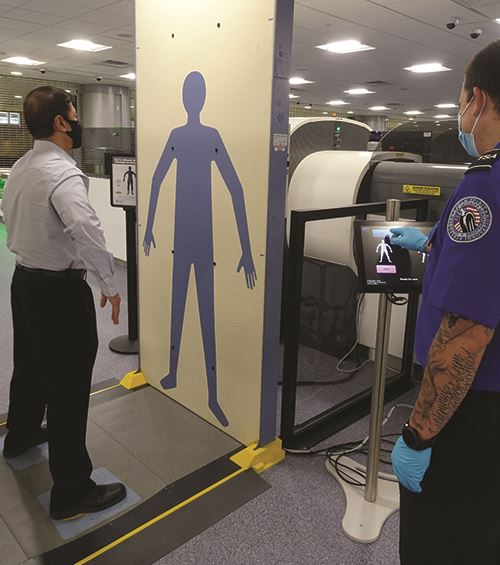
Willing Participants
Officials from TSA were drawn to LAS for its unique passenger profile. Because Las Vegas is a leisure destination popular for vacations and special events, LAS serves a high percentage of infrequent flyers and people traveling from smaller markets. “Our once-a-year flyer is not very familiar with security procedures, and they take longer to screen,” says Vassiliadis.
|
Innovation Sites In addition to Harry Reid International in Las Vegas, TSA designates 12 other airports as “Innovation Sites” for assessing new technology and procedures:
• Boston Logan Int’l |
Additionally, the airport has long dealt with pronounced spikes in traffic from conventioneers and weekend visitors. Now, it also has “football peaks” associated with the game schedule of the Raiders, who moved from Oakland, CA, to
Las Vegas in 2020.
Given its unique passenger profile, LAS has very different traffic patterns from hub airports or those located in business destinations. Vassiliadis notes that it is not at all uncommon for 10,000 additional passengers to pack the checkpoints at LAS just after a convention or special event.
Conversations started with the airport in October 2017 about partnering with them, and the Innovation Checkpoint was operational the following September. “They came knocking on our door,” Vassiliadis recalls. “We have had a great partnership with the TSA ever since they were founded.”
When Terminal 3 was built nearly 10 years ago, it was constructed with space for two security checkpoints. At that time, however, the airport’s traffic did not meet the TSA threshold for two new checkpoints.When the Innovation Checkpoint closed for 15 months due to the COVID-19, LAS seized the opportunity to upgrade the terminal’s electrical, data and lighting systems for the next technological wave. A closure for the work had been planned previously; the pandemic closure simply altered the schedule. The checkpoint re-opened in June 2021 as the city’s convention business began to rebound.
These days, TSA maintains four traditional checkpoints within the airport, including a 12-lane checkpoint on the second level of Terminal 3. The four-lane Innovation Checkpoint is scheduled to open daily, except Wednesdays, from 5 a.m. to 1:30 p.m.
At times, TSA invites specific groups of travelers to use the special checkpoint. “Depending what we are assessing, we may specifically seek all domestic or all international travelers,” Gilkeson says.
“The passengers are really excited to participate,” Vassiliadis adds. “We explain the new technology being tested, and they love being a part of it.”
Eventually, TSA plans to add more lanes at the Innovation Checkpoint so it can assess additional technologies and configurations.
“Technology will always grow,” says Vassiliadis. “Unfortunately, the threat always is growing. We have to have many layers, and technology at the checkpoint is one of the best places to have those many layers.”

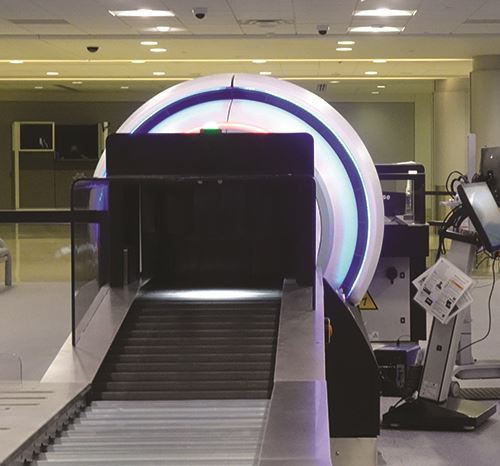
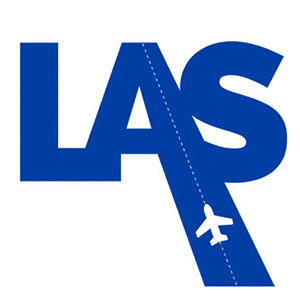 facts&figures
facts&figures

